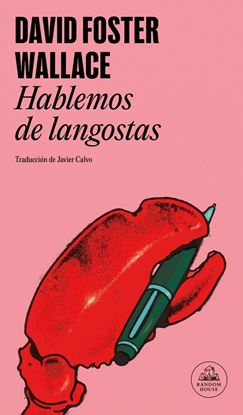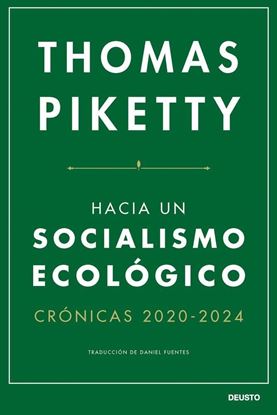

NOVEDADES
HABLAR Y GANAR
Porque todo el mundo tiene algo que contar.
En un mundo repleto de estímulos, es cada vez más difícil atrapar la atención. La inseguridad, la falta de autoestima, la poca claridad son solo los síntomas, en realidad la raíz del problema es otra: necesitas tomar el control de tu relato. Y eso no se consigue permitiendo que otros hablen por ti o esperando en conseguirlo algún día. Hacerlo sería como pretender que un caballo desbocado se dome solo. Para transmitir tu mensaje con seguridad y liderazgo necesitas tomar las riendas de tu narrativa. No hay otro camino.
1,350
HABLEMOS DE LANGOSTAS
¿Sienten miedo las langostas antes de ser devoradas? ¿Tenía Franz Kafka un sentido del humor enfermizo? Por cierto, ¿quién ganó el premio Adult Video News a la Mejor Actriz Porno Femenina del Año cuando Gwyneth Paltrow consiguió su Oscar?
David Foster Wallace contesta a estas preguntas y a otras más delirantes en su tremendamente pertido libro de artículos. En este volumen, DFW se sumerge en el circo en que se han convertido las campañas electorales, a la búsqueda de un documento, en los comicios más agresivos de la reciente historia americana. Más tarde se pasea con descaro por el Festival de la Langosta de Maine, arriesgando su vida para llegar al fondo de la cuestión. También se dirige, cargado de cubos de pollo, a un estudio de radio de Los Ángeles, y asiste a un debate conservacionista presentado por un periodista con una tendencia poco natural a vestir bien solo en la radio. El uso de temas modernos y su atrevido punto de vista convierten este libro en referente del género.
1,500
HACIA UN SOCIALISMO ECOLOGICO
Un futuro sostenible y justo es posible: Piketty nos muestra cómo construirlo
En esta nueva obra, Thomas Piketty recopila sus crónicas escritas entre 2020 y 2024, en las que aborda con lucidez la necesidad de transicionar hacia un modelo económico que integre justicia social y sostenibilidad ambiental. A través de un análisis profundo de las políticas contemporáneas, Piketty critica las fallas del capitalismo actual y propone un cambio transformador hacia un sistema que priorice la equidad y el respeto por el medioambiente. Esta obra ofrece una perspectiva innovadora y urgente para enfrentar los desafíos económicos y ecológicos del siglo XXI.
1,600
HANNAH ARENDT. EL MUNDO EN JUEGO
Hannah Arendt: el mundo en juego interroga el legado de una de las pensadoras más agudas del siglo XX, cuyas lúcidas reflexiones sobre el totalitarismo, la acción política y la condición humana son cada día más necesarias para indagar nuestro presente. Con un estilo analítico brillante y un profundo conocimiento de la obra de Arendt, ilumina las categorías clave de mundo y natalidad, pilares de un pensamiento que, sin pretender una conclusión definitiva, se entrega a la tarea de comprender la experiencia humana en toda su complejidad.Birulés reconstruye las claves de una obra que desafía las clasificaciones tradicionales, caracterizada por su carácter tentativo y su resistencia a la simplificación. A través de un diálogo con textos clásicos y contemporáneos, devela los gestos conceptuales de Arendt frente a la ruptura de la tradición, la fragilidad de los asuntos humanos y el desafío de comprender las experiencias del siglo XX, marcadas por regímenes totalitarios y crisis globales. Organizado en cinco partes, este libro, lejos de ofrecer respuestas cerradas, abre nuevas vías para interpretar la actualidad a la luz de los dilemas planteados por una de las pensadoras más influyentes del siglo XX.
1,850
HANNAH ARENDT. UNA BIOGRAFIA INTELECTUAL
Una biografía importante por la nueva documentación que incorpora para la comprensión de la figura de Hannah Arendt.
¿Por qué una nueva biografía de Hannah Arendt?
Porque el autor ha tenido acceso a documentación hasta ahora desconocida, que permite explorar nuevos ángulos y enriquecer la comprensión de una de las pensadoras más relevantes de la historia contemporánea. Porque presta especial atención a dos momentos cruciales de la vida de Arendt: su estancia en París tras su huida de Alemania y sus primeros años en Estados Unidos. Porque desvela el compromiso de la filósofa con la causa judía y su participación directa en la salvación de niños y jóvenes frente al nazismo. Porque el pensamiento de Arendt se ha revelado como uno de los proyectos intelectuales más lúcidos del siglo pasado, y esta nueva aproximación a su figura nos desvela a un personaje más complejo de lo que hasta ahora creíamos.
Las vicisitudes y el compromiso de Arendt ante el horror del nazismo ayudan a comprender la forja de su pensamiento filosófico. Thomas Meyer ha escrito una biografía rigurosa y de lectura apasionante que arroja nueva luz sobre una mujer comprometida, una de las intelectuales más brillantes del siglo XX.
1,995
HANNAH Y EL VIOLIN
Un libro alegre que celebra la música, el juego, la creatividad y la imaginación que todos llevamos dentro. Cuando Hannah ve una hoja en el césped de su jardín, piensa que tiene la forma de un violín, y decide probar si puede tocar alguna melodía con ella. Pronto todo lo que la rodea empieza a cantar y a bailar al ritmo de la música. Los lectores podrán ver, sentir y escuchar la música de Hannah con las ilustraciones llenas de color y movimiento.
950














